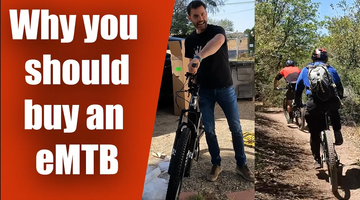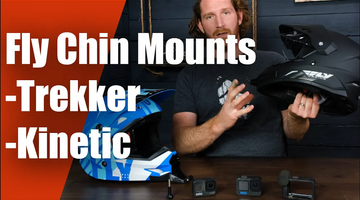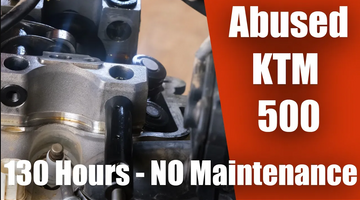As they say, brakes only slow you down, but putting fresh pads on your machine shouldn't cost you too much time. If you have a KTM and need to replace your worn pads, it is actually a pretty simple task with a short list of tools required.
In no particular order you will need a phillips screwdriver, a flathead screwdriver, needle nose pliers, a ratchet with a 10mm socket (and a short extension to make your life easier), an 8mm box end wrench, some rubber tubing and a drain pan. A shop rag of some sort (we like the blue paper towels) is probably a good idea as well. You of course will need a fresh bottle of brake fluid and your new pads, but you knew that already.
The first step is to make sure that your brake reservoir is parallel to the ground. Some of us like to rotate the brake lever into a more ergonomically comfortable angle and as such this can move the brake reservoir into a position that will just dump fluid onto the ground when we do step two.
With the reservoir flat, you can then undo the two phillips head screws on top and remove the cover, carefully setting it aside to avoid getting dirt on the rubber insert. If you watched our video you will notice that we skipped this step which made things a little more difficult than they needed to be further into the project. Hey, we never said we were perfect!
Now you can turn your attention to the pin at the bottom of the caliper that holds the pads in place. With your needle nose pliers, remove the cotter pins that secure the main pin and set them aside. You should then be able to slide the main pin out and set it aside. Then you will remove the two 10mm bolts that hold the caliper in place and lift it away from the rotor.
The next step is to push the caliper pistons back to make room for the new pads. This can be done by reinserting the old pads and using your flathead screwdriver to apply pressure. Here is where you will appreciate removing the reservoir cover earlier, as the pistons will stay in their compressed state. If you don’t remove the cover, the pistons will want to move back due to the pressure that is still present in the system.
From here you can put your fresh pads in place and slide the pin back in making sure to insert it from the same direction as it was removed. Once the main pin is back, secure it with the cotter pins that you removed earlier.
If you forgot to remove the reservoir cover early on or if you want to make sure that the new pads stay separated when reinstalling the caliper use your flat head screwdriver as a wedge to keep the pistons pushed back. The screwdriver will need to be inserted from the top, obviously.
Once the caliper is back in place you can put the 2 10mm bolts back into place and move onto the brake bleeding portion of the program.
Depending on how long your arms are, or just for the sake of convenience you may want to have a friend around for this part.
Remove the rubber cover from the bleed nipple and attach the rubber tubing and aim the other end at the drain pan. Using your 8mm box end wrench crack the bleed nipple loose, and then snug it back so as to not introduce air into the brake system.
Have your friend squeeze the brake lever and then loosen the bleed nipple (making sure to keep pressure on the lever) and then tighten the bleed nipple. Once you have the nipple tightened your assistant can release the lever. This allows you to let some fluid out without any chance of air entering the system. You will need to repeat this step for as long as it takes to see fresh brake fluid coming out of the tubing, taking care to add fluid frequently.
We can’t stress the importance of not letting the fluid level get too low. Too little fluid will allow air into the brake system which is counterproductive to the task at hand.
Once you are comfortable with the amount of fluid exchanged in the brake system be sure to fully tighten the bleed nipple, and put the rubber cover back on.
Up at the reservoir we like to make sure that there is no chance of air entering the system by filling the reservoir enough so there is a little bit of fluid that gets pushed out when the cap is replaced, so having some paper towel here is ideal. With the cap back in place you can secure the two phillips head screws and then return the lever to your preferred riding position.
From there, you can go shred your favorite bit of single track knowing that your brakes are in tip-top shape!









